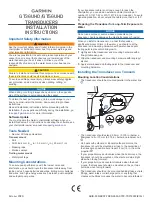
32
Reference Manual
00809-0100-4825, Rev CB
Section 3: Configuration
March 2014
Configuration
Process Variable (PV) damping
The
PV Damp
command changes the response time of the transmitter to smooth variations in
output readings caused by rapid changes in input. Determine the damping setting based on the
necessary response time, signal stability, and other requirements of the loop dynamics of the
system. The default damping value is 5.0 seconds and can be reset to any value between 0 and
32 seconds.
The damping value chosen affects the response time of the transmitter. When it is set to zero (or
disabled), the damping function is off and the transmitter output reacts to changes in input as
quickly as the intermittent sensor algorithm allows (refer to
) for a description of the intermittent sensor algorithm). Increasing the damping value
increases the transmitter response time.
With damping enabled, the transmitter outputs values according to the following relationship.
At time t
Damping Value =
At the time the damping time constant is set, the transmitter output is at 63% of the input
change and continues to approach the input according to the damping equation above.
After one damping time constant following a sensor input step change, the transmitter output
will be at 63.2% of that change. The output continues to approach the input according to the
damping equation above.
For example, as illustrated in
, if the temperature undergoes a step change from 100
degrees to 110 degrees, and the damping is set to 5.0 seconds, the transmitter calculates and
reports a new reading using the damping equation. At 5.0 seconds, the transmitter outputs
106.3 degrees, or 63.2% of the input change, and the output continues to approach the input
curve according to the equation above.
Figure 3-1. Change in Input vs. Change in Output with Damping Set to Five Seconds
Fast Key sequence
1, 3, 3, 1, 3
P
N
P
–
1
e
T
–
+
P = previous damped value
N = new sensor value
T = damping time constant
U = update rate
















































